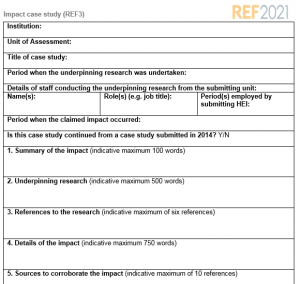Behind the headline figure of 47 impact case studies BU submitted to REF 2021 is several years’ preparation: a ‘light touch’ exercise in 2015, a stocktake in 2017-18, an impact review in 2018, two full Mock Exercises in 2019 and 2020, and a further adhoc review last November. The number of case studies submitted to the 2020 Mock was actually 73 – illustrating the fact that an even larger pool of researchers was involved in the process of honing BU’s impact submission.
Impact is for life, not just REF
Inevitably, impact case study teams heaved a huge sigh of relief once the button was pushed on REF 2021, but impact exists beyond REF, and, of course, existed before it. As Fast Track Impact’s Mark Reed puts it, ‘impact is the good that researchers can do in the world’. With that in mind, we will be showcasing BU’s impact case studies on the Research blog over the coming weeks. As well as acknowledging the hard work that went into producing them, and highlighting the breadth of BU’s research, we hope this series of posts will also provide insight and inspiration for researchers at all stages of their careers.
What exactly is an impact case study?
 A 5-page document, comprising:
A 5-page document, comprising:
- A 100-word pithy summary of the impact achieved.
- A 500-word section describing the research underpinning the impact.
- 6 research outputs, referenced in the section above, which directly link to the impact.
- A 750-word narrative that details the impact/s achieved.
- 10 pieces of evidence to corroborate the impact claims, in the form of independent factual sources, testimonial letters etc.
… and all conveyed in a style as accessible to the lay reader, as to the expert in the field.
Next post: 1) how BU research informed one of the largest citizen science projects ever conducted; and 2) helped save consumers from more than £22m in scams.












 New Nepal scoping review on maternal & neonatal health
New Nepal scoping review on maternal & neonatal health Fourth INRC Symposium: From Clinical Applications to Neuro-Inspired Computation
Fourth INRC Symposium: From Clinical Applications to Neuro-Inspired Computation Writing policy briefs
Writing policy briefs Upholding Excellence: The Concordat to Support Research Integrity
Upholding Excellence: The Concordat to Support Research Integrity ECR Funding Open Call: Research Culture & Community Grant – Application Deadline Friday 12 December
ECR Funding Open Call: Research Culture & Community Grant – Application Deadline Friday 12 December MSCA Postdoctoral Fellowships 2025 Call
MSCA Postdoctoral Fellowships 2025 Call ERC Advanced Grant 2025 Webinar
ERC Advanced Grant 2025 Webinar Horizon Europe Work Programme 2025 Published
Horizon Europe Work Programme 2025 Published Horizon Europe 2025 Work Programme pre-Published
Horizon Europe 2025 Work Programme pre-Published Update on UKRO services
Update on UKRO services European research project exploring use of ‘virtual twins’ to better manage metabolic associated fatty liver disease
European research project exploring use of ‘virtual twins’ to better manage metabolic associated fatty liver disease